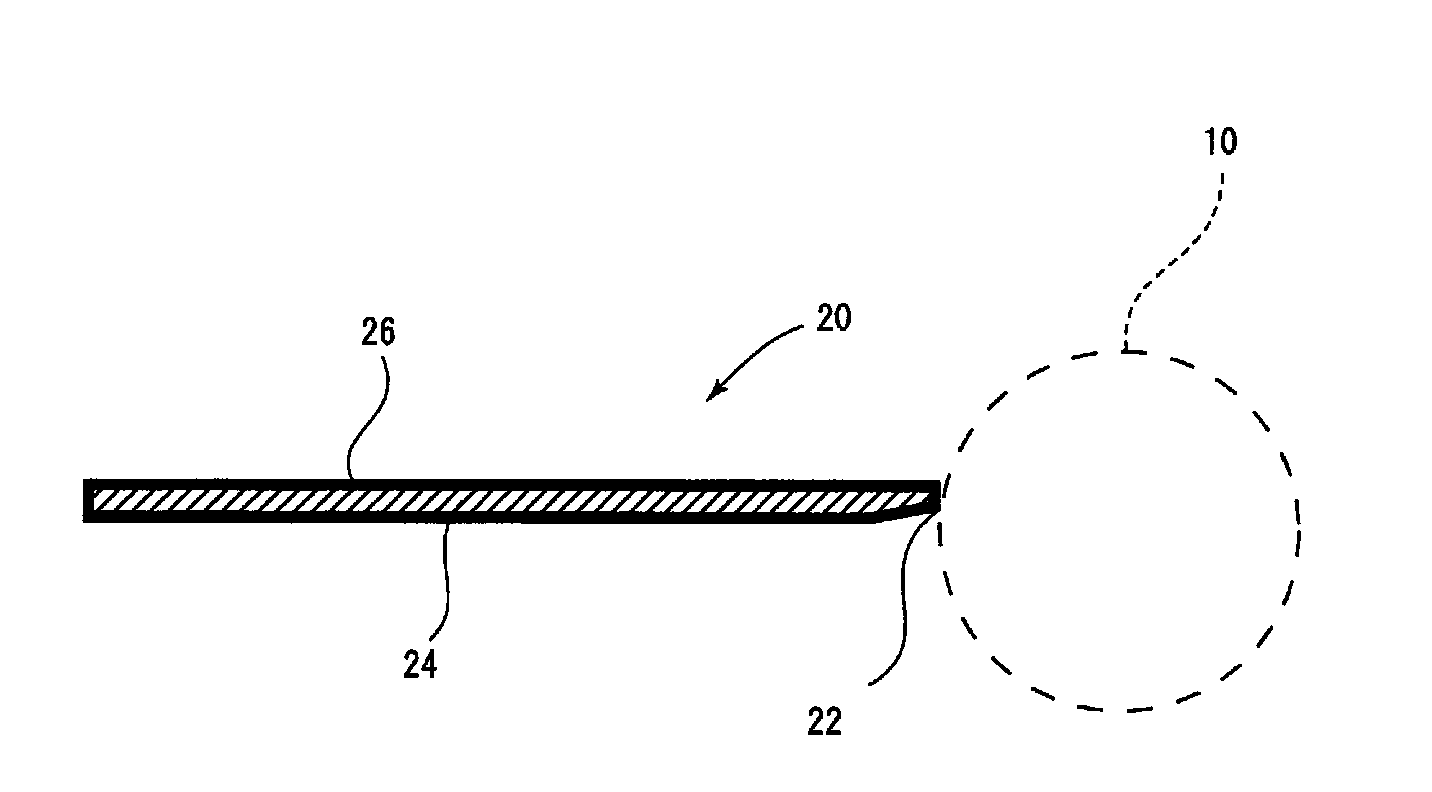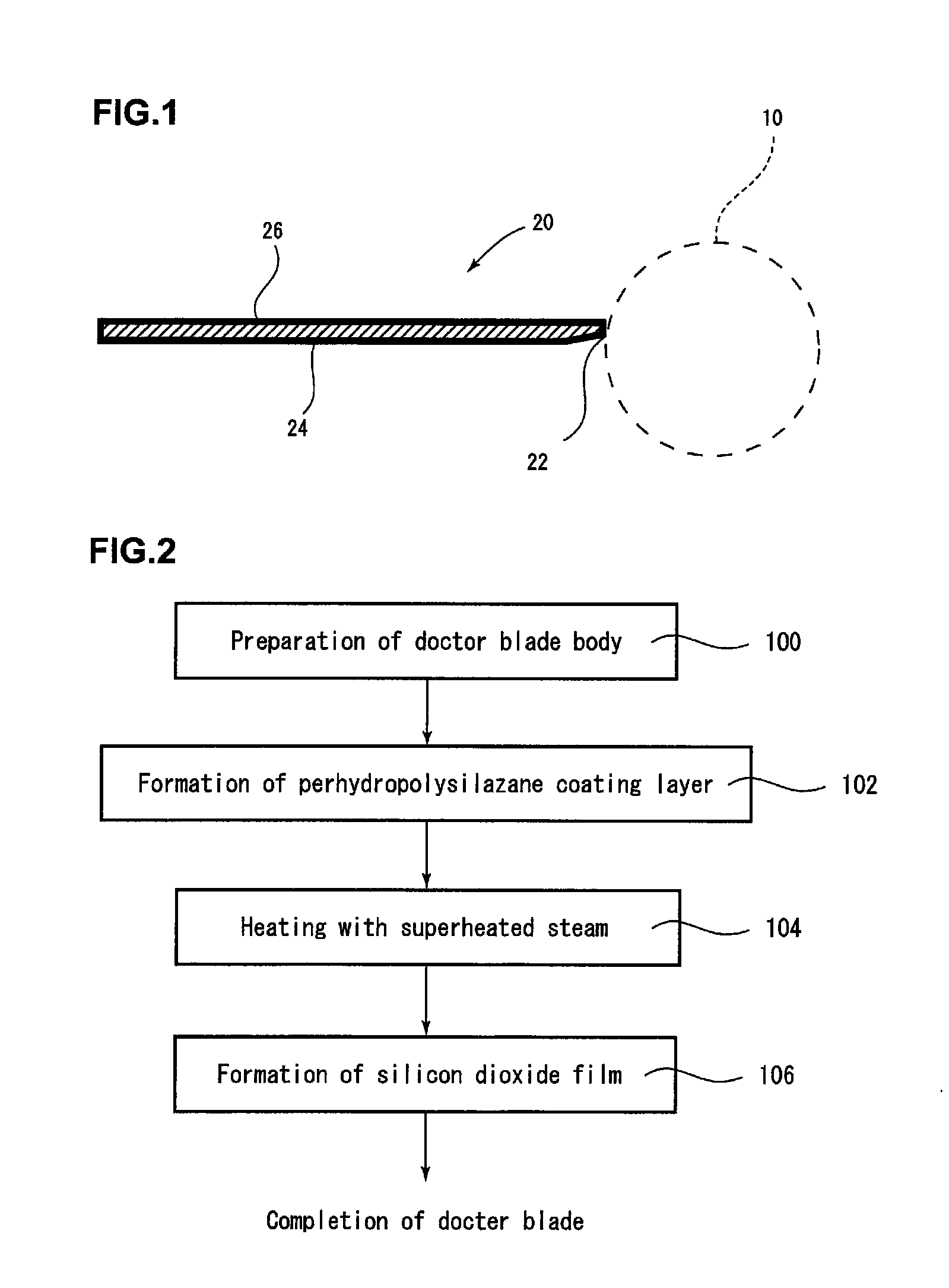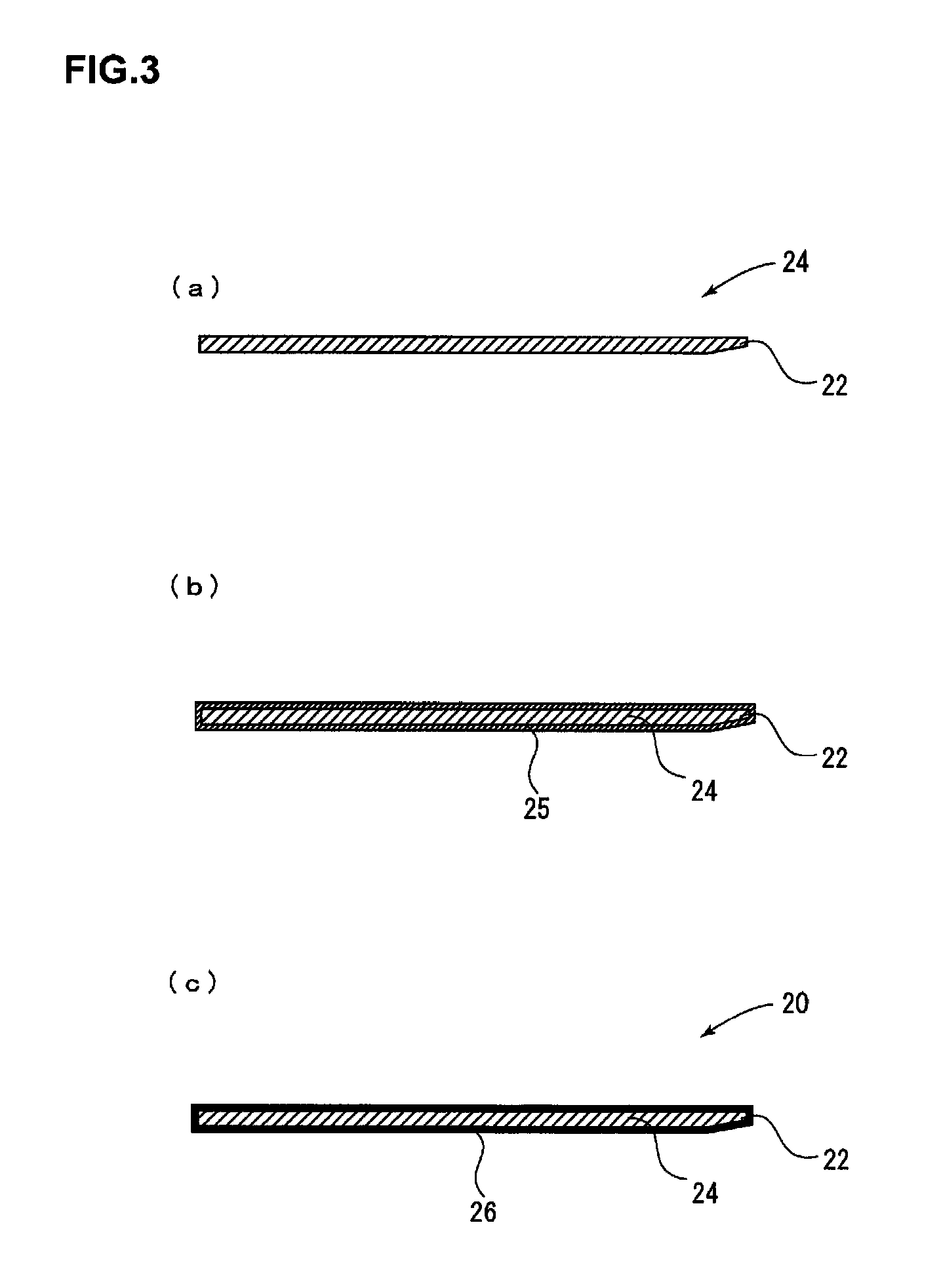Doctor blade
a doctor blade and blade technology, applied in the field of doctor blades, can solve the problems of not reaching the practical level and not attained the improvement of fogging in gravure printing using aqueous ink, and achieve the effects of reducing the amount of ink going under the doctor blade, excellent wettability, and high flatness and linearity
- Summary
- Abstract
- Description
- Claims
- Application Information
AI Technical Summary
Benefits of technology
Problems solved by technology
Method used
Image
Examples
production example 1
[0090]The silicon dioxide film of the present invention was formed as follows. A 20% dibutyl ether solution of perhydropolysilazane (product name: Aquamica NL120A-20, “Aquamica” is the registered trademark of AZ Electronic Materials Co., Ltd.) was applied to a doctor blade body made of carbon steel by HVLP spray coating. The thickness of the coating film uniformly formed on the doctor blade body was 1.0 μm. The doctor blade body coated with perhydropolysilazane was heated with superheated steam (200° C. / 100% RH) for 30 minutes to form a silicon dioxide film (thickness of 0.2 μm). The doctor blade of the present invention was thus completed. When the Vickers hardness of the surface of the doctor blade was measured, it was 2,500.
example 1
[0091]The suitable printing speed at which the occurrence of fogging could not be observed was investigated by carrying out the gravure printing using aqueous ink. As a result, the occurrence of fogging was not seen at a practical printing speed of 110 to 130 m / min which is the same as the speed of the gravure printing using oil based ink when the doctor blade of the present invention manufactured in Production Example 1 was used. In contrast to this, the occurrence of fogging was seen at a printing speed of 95 m / min when the prior art doctor blade composed of a very thin belt-like steel plate was used.
example 2
[0092]The doctor blade of the present invention manufactured in Production Example 1 was set and the gravure printing using aqueous ink (the aqueous ink was Aquapia White (trade name, containing titanium white) of Toyo Ink Mfg. Co., Ltd.) was carried out to print 28,000 m. When the amount of abrasion of the edge was measured, it was 187 μm. This means that the amount of abrasion is 67 μm with respect to a printing ink was carried out with a doctor blade composed of a very thin belt-like steel plate of the prior art to print 20,000 m. When the amount of abrasion of the edge was measured, it was 660 μm. This means that the amount of abrasion is 330 μm based on a printing length of 10,000 m. When the abrasion and recession of the edge of the doctor blade in the gravure printing using aqueous ink become equal to those of the gravure printing using oil based ink, fogging appears markedly.
PUM
| Property | Measurement | Unit |
|---|---|---|
| thickness | aaaaa | aaaaa |
| printing speed | aaaaa | aaaaa |
| thickness | aaaaa | aaaaa |
Abstract
Description
Claims
Application Information
 Login to View More
Login to View More - R&D
- Intellectual Property
- Life Sciences
- Materials
- Tech Scout
- Unparalleled Data Quality
- Higher Quality Content
- 60% Fewer Hallucinations
Browse by: Latest US Patents, China's latest patents, Technical Efficacy Thesaurus, Application Domain, Technology Topic, Popular Technical Reports.
© 2025 PatSnap. All rights reserved.Legal|Privacy policy|Modern Slavery Act Transparency Statement|Sitemap|About US| Contact US: help@patsnap.com



